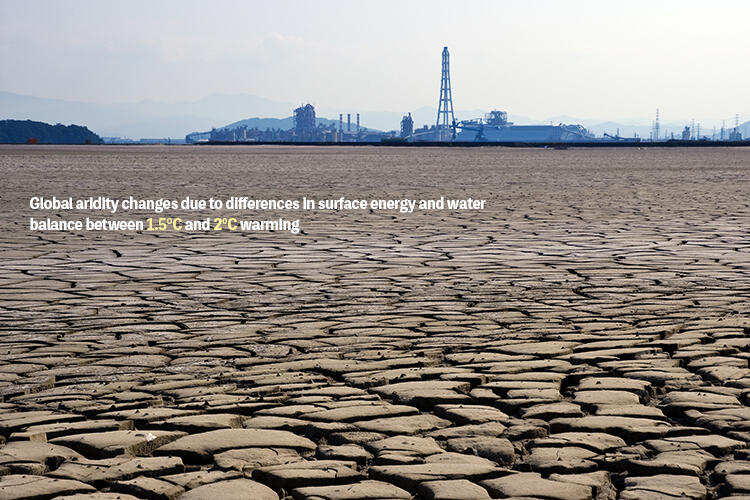Sep 18 2020
In a recent climate modeling study, scientists from the Institute of Industrial Science at the University of Tokyo have uncovered major implications for global aridity and drought while restricting warming to 1.5 °C instead of 2 °C above pre-industrial levels.
 Global aridity changes due to differences in surface energy and water balance between 1.5 °C and 2 °C of warming. Image Credit: Institute of Industrial Science, the University of Tokyo.
Global aridity changes due to differences in surface energy and water balance between 1.5 °C and 2 °C of warming. Image Credit: Institute of Industrial Science, the University of Tokyo.
Both the natural world and human society are seriously affected by drought, which is normally estimated to increase under global climate change. Consequently, evaluation of the risk of drought under climate change is a crucial area of climate research.
The United Nations Framework Convention on Climate Change (UNFCCC) has recommended in the 2015 Paris Agreements that the rise in global average temperature must be restricted to between 1.5 °C and 2 °C above pre-industrial levels to reduce the impacts of severe climate change.
But several studies have been focusing on the relative significance of this 0.5 °C of global average temperature rise and the kind of impact it can have on aridity and drought throughout the world.
We wanted to contribute to the understanding of how important that 0.5°C could be, but it such a study is not easy to conduct based on previous modeling approaches. This is mainly because most models look at the extreme high levels and you cannot simply take a slice out of the data while the model spins up to this maximum.
Hyungjun Kim, Study Corresponding Author, Institute of Industrial Science, University of Tokyo
Kim continued, “Therefore, we used data from the specially designed Half a degree Additional warming Prognosis and Projected Impacts (HAPPI) project to assess the impacts on aridity based on estimations of the balance between water and energy at the Earth's surface.”
The study demonstrated that 2 °C of warming resulted in more severe aridification and more frequent dry years in many regions of the world when compared to 1.5 °C, and these facts highlight that efforts should be made to reduce warming to 1.5 °C above pre-industrial levels.
There is a really strong message that some parts of the world could have more frequent drought at 2 °C than at 1.5 °C. This situation could be especially severe in the Mediterranean, western Europe, northern South America, the Sahel region, and southern Africa.
Akira Takeshima, Study Lead Author, Institute of Industrial Science, University of Tokyo
Takeshima continued, “However, this situation is highly regional. In some parts of the world, like Australia and some of Asia, the opposite situation was simulated, with a wetter climate at 2 °C than at 1.5 °C.”
These results demonstrate the significance of considering the regional effects of the additional 0.5 °C of warming, particularly with regard to any future relaxation of the 1.5 °C target.
Journal Reference:
Takeshima, A., et al. (2020) Global aridity changes due to differences in surface energy and water balance between 1.5 °C and 2 °C warming. Environmental Research Letters. doi.org/10.1088/1748-9326/ab9db3.